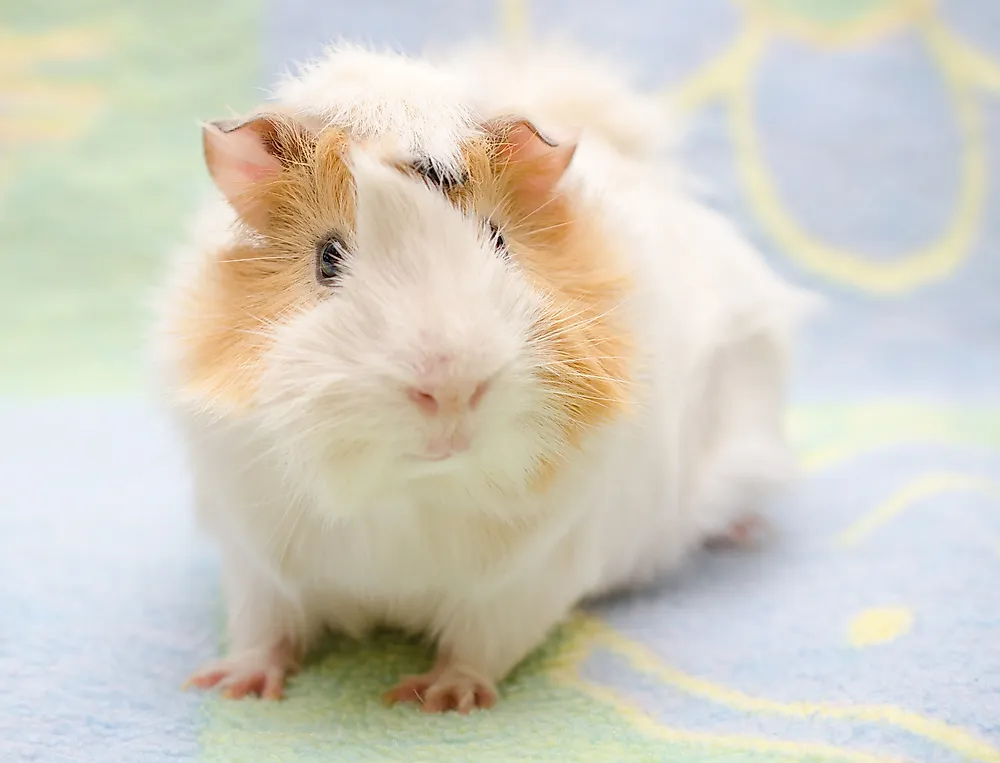Guinea Pigs - Animals of the World

Contrary to their name guinea pigs aren’t native to the country of Guinea nor are they members of the pig family. These diminutive rodents, also known as cavies, actually originate from the Andean region of South America; more specifically southern portions of Peru, Ecuador, Bolivia, and Columbia. Besides being a popular pet guinea pigs have also become synonymous with their role as lab animals in the field of medical experimentation particularly during the 19th and 20th centuries. In South America wild guinea pigs have long been a dietary staple valued for their protein.
History of Domestication
Although it’s believed that the first guinea pigs were domesticated for food consumption as far back as 5000 BC, the animals became popular as pets after being brought back to Europe by traders in the 16th century. There are many theories as to why these rodents acquired their distinctive yet scientifically inaccurate name. It’s often been suggested that they were so called due to the physical traits (in miniature form) that they share with pigs such as the absence of a tail, rounded hindquarters, large head, voracious appetite, and the squeaking or wheeking sounds they emit. The reference to guinea may be due to the fact that they were thought to have been initially transported to Europe from South America via the country of Guinea but this theory remains unproven.
Breeds of Guinea Pig
There are many different breeds of guinea pigs including long and short haired, as well as rough coated varieties. Among the most popular breeds as pets are the Abyssinian, Sheltie, English/American Short-haired, and Peruvian. These small rodents come in a variety of colors including black, white, gold, and silver, as well as numerous color patterns (ie. tortoise shell, brindle, tan, roan, and Dalmatian). There’s also a hairless guinea pig which is commonly referred to as a Skinny pig. In the US, the American Cavy Breeders Association determines which breeds are eligible to participate in competitive shows as well as establishing the standards of perfection for the animal.
Characteristics of Guinea Pigs
In regard to temperament, guinea pigs are curious and responsive creatures who enjoy interacting with their owners. Females are known as sows while males are referred to as boars.
Because they are strict herbivores guinea pigs can eat an array of raw fruits and vegetables including apples, carrots, lettuce, and spinach. They also require supplemental sources of vitamin C. A large part of the animal’s diet should be made up of hay, alfalfa, and grass all of which aid in digestion and provides guinea pigs with valuable nutrients.
They are capable of making a variety of different sounds in order to express their feelings. Among their most common vocalizations are wheeking or whistling which usually denotes excitement, purring when content or happy, chattering as a warning to others, squealing in distress, as well as chirping, rumbling, and whining.
Guinea pigs have teeth which continue to grow throughout their lives. Because of this they spend a great deal of time chewing and may gnaw on a variety of materials including paper and cloth.
Guinea pigs are capable of breeding throughout the year and have a gestation period of 59-72 days. Typical litters usually number an average of three piglets.
The rodents have a typical lifespan of four to eight years with adults weighing between 24.7- 42.3 oz. and measuring ten to fourteen inches in length.
Guinea Pigs as Pets
According to statistics from the American Veterinary Medical Foundation in 2007, the number of pet guinea pigs in the US numbered approximately 1,362,000.











